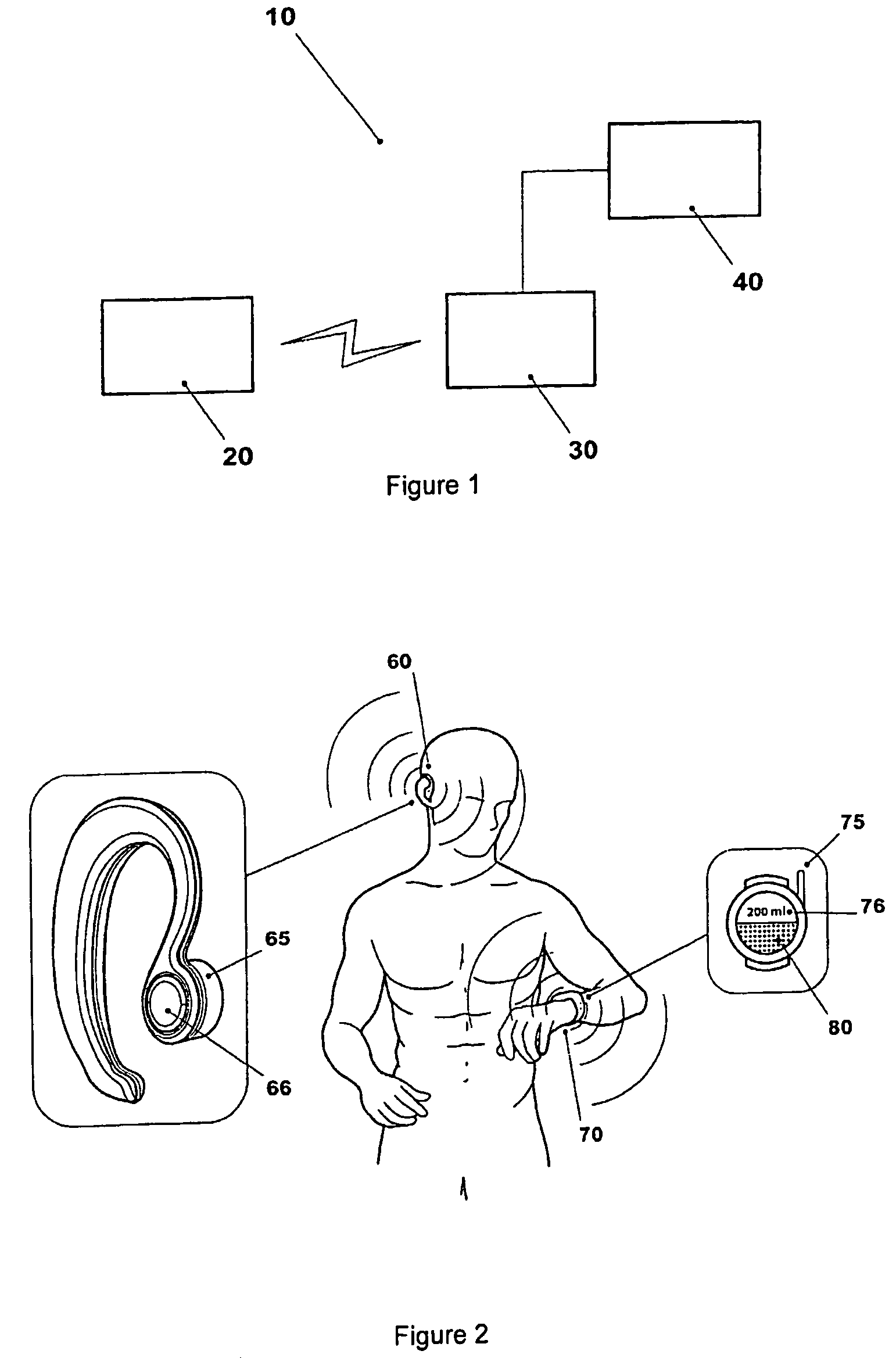Hydration monitor
a monitor and hydration technology, applied in the field of hydration monitors, can solve the problems of not being practicable for exercise, system can only be used before, and osmometry is not practical for exercise, so as to achieve safe hydration level, avoid severe dehydration, and maximise performance
- Summary
- Abstract
- Description
- Claims
- Application Information
AI Technical Summary
Benefits of technology
Problems solved by technology
Method used
Image
Examples
Embodiment Construction
[0058]FIG. 1 is a block diagram of a hydration monitoring system according to an embodiment of the present invention.
[0059]The hydration monitoring system 10 includes a temperature sensor 20, a processor 30 and a display 40.
[0060]The temperature sensor 20 is arranged to measure body temperature of a subject and communicate the measured temperature to the processor 30. Upon receipt of the measurement, the processor is arranged to calculate a body water level for the subject and output a corresponding hydration indication to the display 40.
[0061]Preferably, the temperature sensor 20 is arranged to measure temperature of a tympanic membrane within one of the subject's ears.
[0062]The calculation performed by the processor is carried out at regular intervals as follows:
[(core body temperature current−core body temperature normal)×weight] / (factor of ambient compensation×100)
[0063]The normal core body temperature will have been determined and / or input into the device prior to use. The norm...
PUM
 Login to View More
Login to View More Abstract
Description
Claims
Application Information
 Login to View More
Login to View More - R&D
- Intellectual Property
- Life Sciences
- Materials
- Tech Scout
- Unparalleled Data Quality
- Higher Quality Content
- 60% Fewer Hallucinations
Browse by: Latest US Patents, China's latest patents, Technical Efficacy Thesaurus, Application Domain, Technology Topic, Popular Technical Reports.
© 2025 PatSnap. All rights reserved.Legal|Privacy policy|Modern Slavery Act Transparency Statement|Sitemap|About US| Contact US: help@patsnap.com



